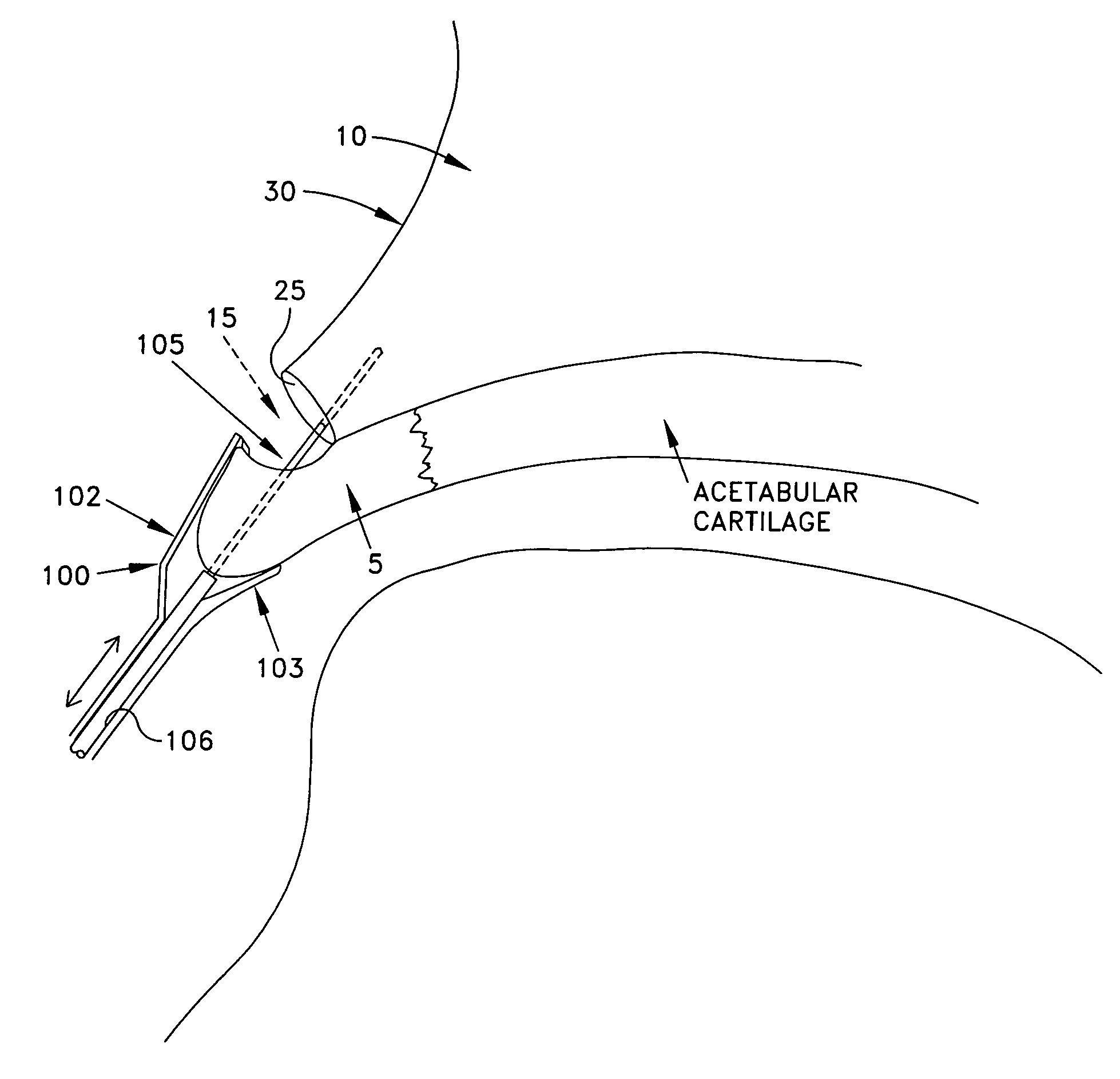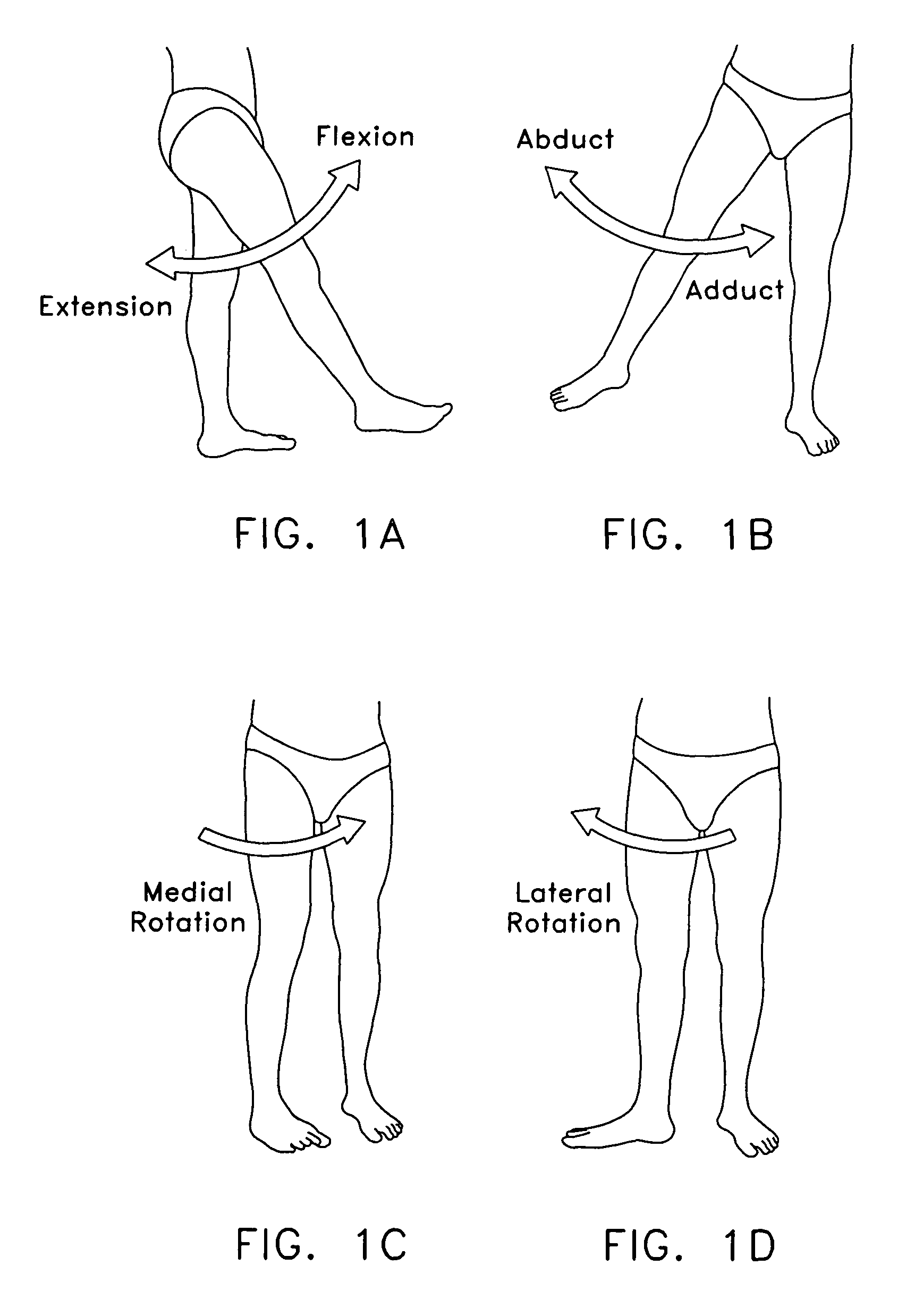Method and apparatus for re-attaching the labrum of a hip joint
a labrum and hip joint technology, applied in the field of hip joint labrum re-attachment, can solve the problems of significant interference with patient comfort and lifestyle, pathology so severe as to require partial or total hip replacement, and general limited procedures, so as to facilitate labrum re-attachment, facilitate securing the labrum, and achieve superior labral re-attachment
- Summary
- Abstract
- Description
- Claims
- Application Information
AI Technical Summary
Benefits of technology
Problems solved by technology
Method used
Image
Examples
Embodiment Construction
[0120]The present invention provides a novel method and apparatus for re-attaching the labrum to the acetabulum.
[0121]The present invention also provides a novel method and apparatus for treating pincer-type FAI.
[0122]More particularly, and looking now at FIGS. 19-21, when treating pincer-type FAI, it may be desirable to remove the overgrown acetabular portion 15 in order to free the labrum 5 and to alleviate the pincer impingement. Thereafter, it is necessary to secure the freed portion of the labrum to the newly-trimmed rim surface 25 (FIG. 21) of acetabulum 10, in order to facilitate proper healing and restore normal function to the joint.
[0123]To this end, and looking next at FIG. 22, the freed portion of labrum 5 is grasped by a grasper 100 (e.g., between arms 102, 103) so as to hold the freed portion of labrum 5 stable. Then a guide pin 105 is passed through grasper 100 (e.g., through an interior lumen 106 of grasper 100), through the freed portion of labrum 5 and then into ri...
PUM
 Login to View More
Login to View More Abstract
Description
Claims
Application Information
 Login to View More
Login to View More - R&D
- Intellectual Property
- Life Sciences
- Materials
- Tech Scout
- Unparalleled Data Quality
- Higher Quality Content
- 60% Fewer Hallucinations
Browse by: Latest US Patents, China's latest patents, Technical Efficacy Thesaurus, Application Domain, Technology Topic, Popular Technical Reports.
© 2025 PatSnap. All rights reserved.Legal|Privacy policy|Modern Slavery Act Transparency Statement|Sitemap|About US| Contact US: help@patsnap.com



